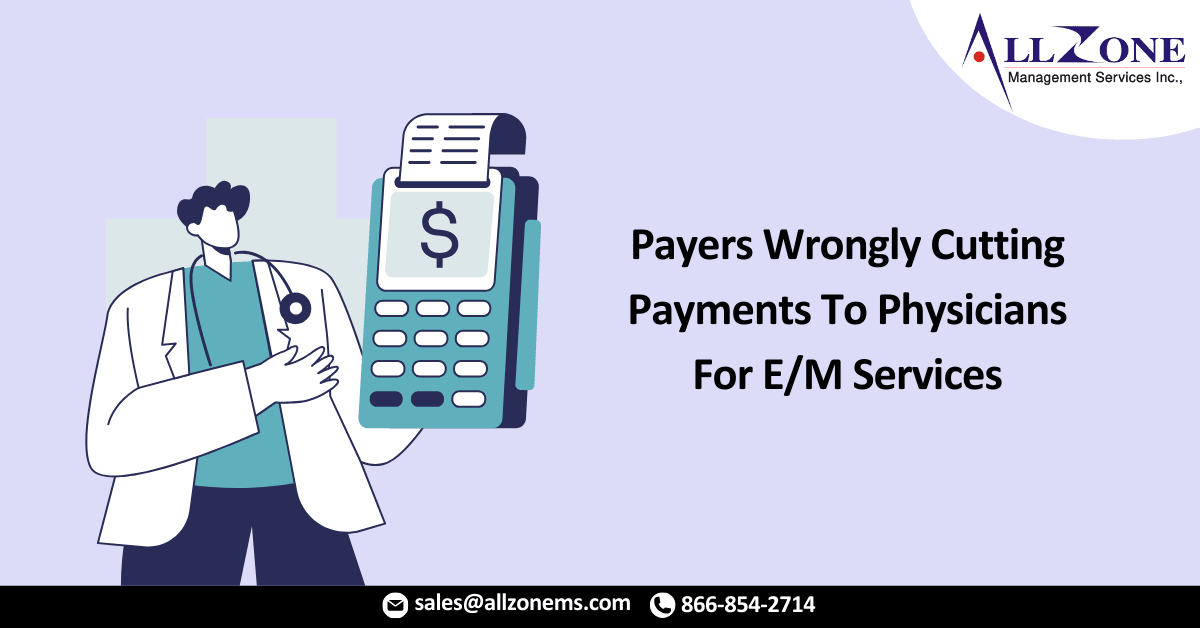Payers have been wrongly cutting payments to physicians for evaluation-and-management (E/M) services—often automatically through the use of claim-editing algorithms. A new AMA resource helps physicians fight back against health insurer downcoding.
Downcoding happens when a payer changes a claim to a lower-cost service than what was submitted by the physician, leading the practice to get paid for a lower level of care than was provided. “Claim-editing” software algorithms downcode without any review of clinical records or requests for additional information.
The new AMA resource, “Payer evaluation and management (E/M) downcoding programs. What you need to know” (PDF), provides tools to help physicians recognize downcoding schemes and to take action against them, including:
- Advice on identifying downcoding and examples of downcoding scenarios.
- Sample plan communications.
- Guidance on reviewing remittance.
- Documentation tips to support successful appeals.
- Sample downcoding-appeal letter (DOC).
Payers Targeting E/M codes
Substantive changes to the E/M services Current Procedural Terminology (CPT®) code set and reporting guidelines took effect last year that cut physicians’ documentation burden and simplified coding.
“While these changes allow physicians to spend less time on documentation and more time with patients, some health plans are disputing E/M levels for submitted claims,” the resource says. “Much to the frustration of physicians, payers are increasingly implementing E/M downcoding programs that inappropriately reduce payment for claims billed.”
This inappropriate downcoding of claims can significantly cut physician practice revenue—especially when it becomes routine or when a physician becomes subject to global prepayment review.
Physicians who believe their practice has been subject to payer downcoding are invited to participate in an AMA informational survey. Results will be used to help support physician practices in responding to payer downcoding initiatives.
Acting on Principles
The AMA advocates according to these principles regarding downcoding:
- Blanket downcoding is not appropriate. Any downcoding program should only target outliers whose coding patterns differ significantly from their same-specialty peers.
- If a physician is identified as having outlier coding patterns, payers should first take an educational approach and provide correct coding information and instruction.
- It is never appropriate to downcode claims without a review of the medical record. If a claim is subject to downcoding, the physician should have an opportunity to provide supporting documentation before payment is reduced—not after.
- It is unduly burdensome to require documentation be provided routinely for all claims the payer deems potentially subject to downcoding.
- Any physician subject to an automatic or algorithm-based downcoding program should be notified in advance of the downcoding so they know to be on alert for downcoded claims.
- Any payer that downcodes a claim should send the physician written notification of the adjustment; including the principal reason the claim was downcoded, specific clinical rationale for the decision, and a statement describing the process for appeal.
Payers are downcoding claims unilaterally with growing frequency and without notice—and doing so in ways that make it extremely difficult to identify in coding audits.
“Physician practices must keep a vigilant eye on payment details to identify downcoded claims,” the resource says.
For More Information: how physicians can fight back against payer downcoding schemes

